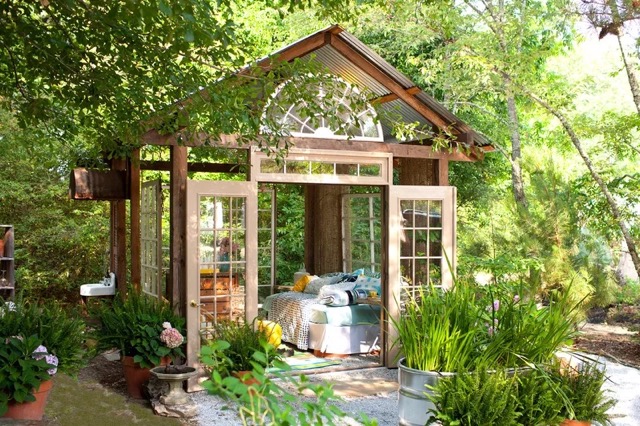A garden room is a separate structure or an extension of a house designed to be used as a versatile space within a garden or outdoor area. It’s often built with large windows or even entirely of glass to provide ample natural light and views of the surrounding greenery.
Garden rooms can serve various purposes, such as a home office, studio, gym, relaxation space, or even as a guest room. They offer a retreat-like atmosphere, allowing individuals to connect with nature while still being protected from the elements. These spaces are often insulated and equipped with heating and electricity to ensure comfort throughout the year.
Here are some tips for creating and maintaining a garden room:

- Location: Choose a location in your garden that receives sufficient sunlight and is easily accessible from your home. Consider factors like privacy, views, and proximity to utilities if you plan to have electricity or plumbing.
- Design: Design your garden room to complement the style of your house and the surrounding landscape. Opt for materials that blend well with the natural environment, such as wood, stone, or brick. Incorporate large windows or glass doors to maximize natural light and views.
- Functionality: Determine the primary function of your garden room and plan its layout accordingly. Whether it’s a home office, studio, or relaxation space, ensure that the design and furnishings support its intended purpose.
- Comfort: Make your garden room comfortable year-round by insulating it properly and installing heating and cooling systems if necessary. Consider adding features like a fireplace, ceiling fan, or portable heater to regulate temperature.
- Furnishings: Choose furniture and decor that are both stylish and functional. Opt for pieces that are weather-resistant and easy to clean, especially if your garden room is exposed to the elements. Incorporate comfortable seating, storage solutions, and personal touches to make the space inviting.
- Greenery: Enhance the ambiance of your garden room by incorporating plants and greenery. Choose low-maintenance indoor plants that thrive in natural light, such as succulents, ferns, and snake plants. Consider adding potted plants, hanging baskets, or a vertical garden to bring the outdoors in.
- Lighting: Illuminate your garden room with a combination of natural and artificial lighting. Maximize natural light during the day with large windows and skylights, and supplement with overhead lighting, floor lamps, or string lights for evenings and cloudy days.
- Privacy: Ensure privacy in your garden room by strategically positioning it within your garden and using landscaping elements like hedges, fences, or trellises. Consider installing window treatments or blinds for added privacy when needed.
- Maintenance: Regularly maintain your garden room by cleaning windows, sweeping floors, and tending to plants. Keep an eye out for any damage or wear and tear, and address any issues promptly to preserve the integrity of the structure.
- Personalization: Finally, personalize your garden room to reflect your taste and personality. Add decorative elements like artwork, rugs, cushions, and accessories to make the space uniquely yours. Experiment with different layouts and configurations until you find what works best for you.


